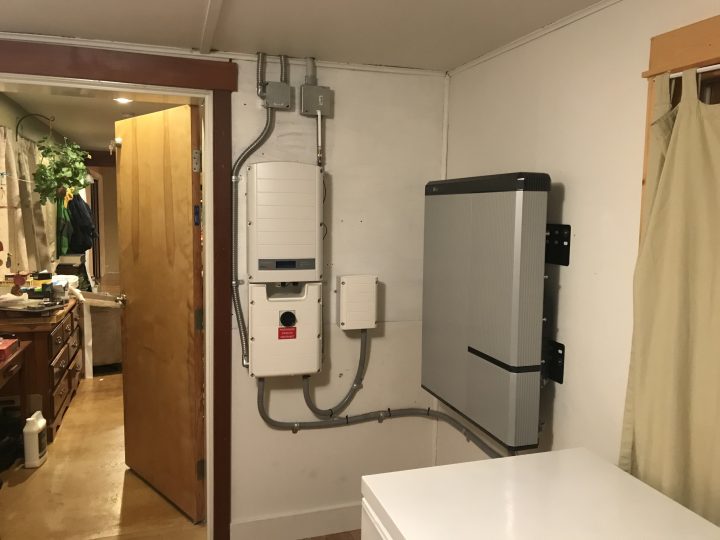Taking Care During An Emergency – We are Available to You via Phone and E-mail – Some Thoughts on Emergency Preparation
During the epidemic our office is closed and installations are temporarily suspended. We are working via phone and email from home, and we are able to perform virtual site evaluations and proposals. Our crew is at home taking care of their families, and eager to resume our solar installations. Please give us a call or send an email to learn what you can do at your home or business in terms of solar. Please be prepared to send us a copy of your power bill, and photos of your electrical service panel. The house and roof can be reviewed using Google Earth and some other online tools.
For all of us, our health and safety is paramount at this moment. We are grateful for those in essential jobs who are working for all our benefit – thank you to them.
Many years ago, I came across a theory of a continuum of disasters, that may be useful to consider when preparing for the worst and hoping for the best. The theory that one one end of the continuum are small emergencies – that would affect you and a very small number of people around you, would last a relatively short time, and which are relatively easy to prepare for. For example individual disasters like this for example would be a job loss, or perhaps neighborhood-wide if a car hit a power pole and knocked out. Disasters on the other end of the spectrum affect a large number of people in a large geographical area, are long-lasting, and can be difficult and expensive to prepare for. In the past, I would always think of Hurricanes Katrina and Sandy as examples, involving long term power outages, perhaps loss of clean municipal water supplies, and perhaps physical danger and structure collapses. The current Covid-19 pandemic surely is at the very serious side of the spectrum. The odd thing about this disaster is that for many of us, the most difficult effect so far is staying home, and for many of us there is loss of income. If we have successfully avoided infection and illness for ourselves and our loved ones at this point, there is no immediate loss of physical safety or discomfort, no loss of food, power, water, or shelter. At this point, we are all affected by it, and it sadly appears that the disease will become so widespread that we will all know people seriously affected.
I bring up this concept of disaster continuum as a framework for how we can think about how to prepare for such events. It seems prudent to take the steps initially to prepare for the more likely and smaller disasters, while working your way up to more robust systems. Initial thoughts go to one gallon of stored water per person per day, food for a month, some emergency cash on hand, first aid supplies, and none of us will probably ever forget the grocery store shelves bare of toilet paper and hand sanitizer. Providing your own electricity is a little higher up the spectrum, and should be considered after taking care of several other basics. We continue to receive an increasing number of inquiries about batteries as a way of using your solar array in the event of a power outage, and we have been installing more of these systems as wall-mounted residential scale lithium batteries are becoming more common. During this particular event so far however, we have seen that stocking up on basic supplies has been the most useful preparations, in addition to doing everything you can to maintain a healthy immune system, which is always a good idea. At my house it means focusing on the garden and orchard, and adding some new chicks to the small (and aging) flock of egg-laying hens.
Last year at our home, we replaced our small lead acid battery with a larger lithium battery from LG. I say larger in terms of capacity only – it is actually 8 times the usable capacity, while being physically smaller. We have only noticed one brief outage in the time this new battery has been present, but it is a significant part of our overall preparedness. Our 10 kwh LG lithium battery backs up our refrigerators, chest freezer, kitchen and living room lights and receptacles, and the small circulating pumps on our solar thermal collectors and for our radiant floor heat. The battery is recharged by the solar array on the roof of the house, and so will be recharged during an outage. In the winter, we would have to be very conservative with our usage to stay within the amount of energy our array makes during winter months. In the summer, the array would be making more energy than we could use or store.
As a company, our primary focus is helping our clients make clean energy with grid-tied solar (without batteries), which is good economics, a good investment in the home, and good for the environment. For some people, batteries are a good companion technology, though the benefits are in terms of resilience and preparedness, not easily quantifiable environmental or economic benefits.
We look forward to hearing from you, and to getting back up on the roof as soon as we are able – in the meanwhile, stay safe and stay healthy!

10 kWh LG lithium battery and SolarEdge StorEdge inverter
Thank you. I appreciate your posts – they are thoughtful and well written. Also appreciate the photos – particularly this one as it is something that I had not seen before.
Thank you Gale! This forum does not generate a lot of feedback at this point, so your encouragement is very appreciated. 🙂
– Andy